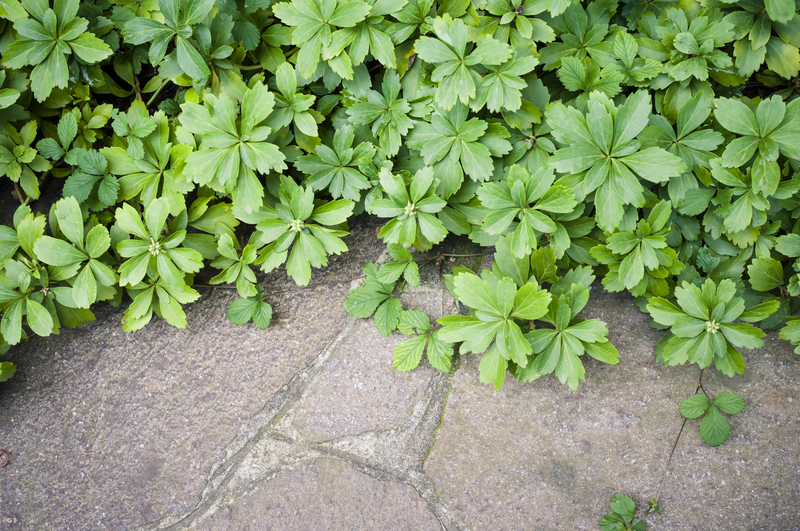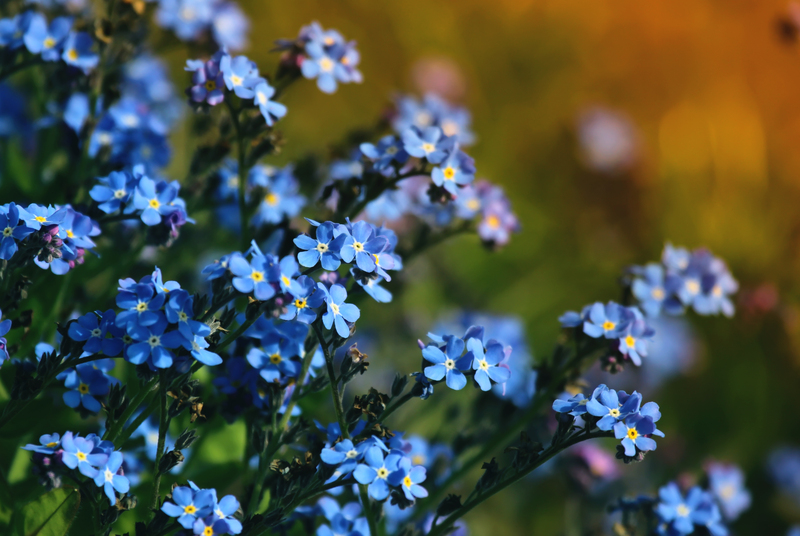Natural Stump Removal Tips for a Pristine Lawn
Tree stumps can be more than just an eyesore - they can also pose tripping hazards, attract pests, and disrupt your perfectly manicured lawn. Whether you recently removed a tree or inherited a yard with lingering stumps, addressing them is essential to restore your lawn's beauty and functionality. While there are multiple ways to deal with stubborn stumps, natural stump removal techniques are safe, environmentally friendly, and cost-effective alternatives to harsh chemicals or heavy machinery. In this comprehensive guide, learn how to remove stumps naturally, the benefits of these methods, and how to keep your lawn pristine all year long.

Why Choose Natural Stump Removal?
- Eco-friendly: Avoids harmful chemicals that can leach into soil and water.
- Safe: Poses minimal risk to pets, children, and wildlife.
- Cost-effective: Uses readily available household items or affordable supplies.
- Preserves soil health: Maintains a healthy balance of microorganisms vital for grass and plant growth.
- Makes lawn maintenance easier: Helps facilitate mowing and landscaping activities.
Natural tree stump removal techniques not only benefit the environment but also contribute to the overall health and appeal of your lawn. Before you begin, assess the stump's size, age, and root structure to select the best removal approach for your specific situation.
Preparing for Natural Stump Removal
Successful natural stump removal starts with adequate preparation. Follow these preliminary steps:
- Clear the Area: Remove rocks, debris, mulch, and grass from around the stump's base for easier access.
- Cut the Stump Low: Use a saw or axe to trim the stump as close to the ground as possible. The lower the stump, the faster the decomposition.
- Drill Holes: Drill deep holes (about 1 inch in diameter and several inches deep) spaced every 2-3 inches across the surface and sides of the stump. This enhances air, water, and decomposition agent penetration.
Now you're ready to tackle that stubborn stump using all-natural methods. Below, explore a variety of tried-and-true strategies for chemical-free, organic tree stump removal.
Top Natural Stump Removal Methods
1. Accelerating Decomposition With Nitrogen-Rich Materials
Decomposition is nature's way of recycling wood back into the soil. To speed up this process, you can introduce materials rich in nitrogen--an essential element for breaking down cellulose and lignin in wood. Here's how:
- Add Compost: Pack holes with mature compost or well-rotted manure. Moisture and microorganisms in compost enhance decaying.
- Apply Animal Fertilizer: Use cow, chicken, or horse manure as a natural catalyst for decomposition.
- Mulch Covering: Pile organic mulch, leaves, or wood chips over and around the stump to retain moisture and attract fungi and bacteria.
- Repeat as Needed: Reapply materials every 3-4 months, ensuring the stump remains damp and covered.
This method can take several months to a couple of years, depending on the size and hardness of the stump, but it's a gentle and completely natural way to nourish your soil in the process.
2. Epsom Salt Method: Fast-Tracking Stump Rot Naturally
Epsom salt, or magnesium sulfate, is a popular organic stump removal aid due to its ability to dehydrate and break down wood fibers. This method is both non-toxic and highly effective when used correctly. Here's how to apply it:
- Drill Holes: Use the pre-drilled holes from your prep stage.
- Fill Holes: Pour Epsom salt into each hole, filling them to the top.
- Add Water: Pour a small amount of water into the holes to start the dissolving process; keep the stump damp but not flooded.
- Seal it: Cover the stump with a heavy-duty tarp or plastic. This increases heat and restricts sunlight, further boosting decomposition.
- Check Monthly: Every few weeks, repeat the application of Epsom salt and check for softening wood fibers.
Within six months to a year, the stump will become spongy and easy to chop or even pull out, especially if you combine this method with regular manual chipping.
3. Cultivating Fungi for Natural Stump Decay
Did you know mushrooms are nature's expert decomposers? Specific types of fungi--such as oyster mushrooms--can speed up stump breakdown significantly. This method is not only effective but can also add visual interest to your garden:
- Drill Holes: Ensure the holes go deep enough for mushroom mycelium to take hold.
- Insert Mushroom Spores: Fill holes with plugs or sawdust spawn of your chosen mushroom (oysters are a popular, safe choice).
- Moisture is Key: Water regularly and keep the area shaded and covered with mulch or a burlap sack.
- Be Patient: Over a year or two, the fungi's mycelium colonize the wood, enhancing natural decay--sometimes producing edible mushrooms along the way!
Pro tip: Be sure you only use edible mushroom spores if you wish to harvest. For safety, avoid wild mushroom growth on stumps around pets or children.
4. Manual Removal: Leveraging Simple Tools
If you have a small or medium-sized tree stump and a healthy dose of patience, manual removal is a low-impact, all-natural solution. This technique requires some elbow grease, but it's very rewarding and immediate.
- Use a Digging Bar/Pickaxe: Loosen the earth around the stump and expose major roots.
- Chop and Cut Roots: Use a sharp hatchet, hand saw, or pruning loppers to sever roots radiating from the stump.
- Leverage the Stump: Post severing all the major roots, work a digging bar under the stump and pry it out incrementally.
- Extract and Fill: Dispose of the stump responsibly, then backfill the hole with topsoil and reseed the area for a flawless lawn finish.
This method is best for smaller stumps and is both chemical-free and highly effective. For extra large or deeply rooted stumps, consider professional help or use natural rot methods first.
5. Boiling Water & Fire: Simple Yet Effective
If you need to weaken a stubborn stump for easier manual removal (and local regulations permit), boiling water can be a helpful ally:
- Pour boiling water: Directly into drilled holes, repeat several times. This damages the wood's cell structure, enhancing decay.
- Burning Method: Sometimes, controlled, contained burning is used in rural settings. Check local laws first--never burn stumps in drought-prone or urban areas for safety reasons.
Keep in mind: *Fire should always be a last resort and must be managed with extreme caution.* In most cases, other natural stump removal methods prove equally effective without the associated risks.
How to Maintain a Pristine Lawn After Stump Removal
After successfully removing a tree stump, a bit of restoration work ensures your lawn stays lush, even, and healthy:
- Backfill the Hole: Fill the void with topsoil, then pack it down to prevent settling.
- Reseed or Sod: Apply quality grass seed or lay sod over the filled area, water regularly, and cover lightly with straw to protect new growth.
- Fertilize and Mulch: Add a touch of organic fertilizer or mulch to jumpstart soil health and grass root development.
- Monitor for Sinkholes: Keep an eye out for soil settling. Fill any depressions as they appear.
A spotlessly groomed yard not only looks beautiful but also increases your home's curb appeal and usability.

Frequently Asked Questions About Natural Stump Removal
How long does it take to remove a stump naturally?
Natural stump removal is not an overnight process. Depending on the chosen method, wood species, and stump size, it can take several months to a few years for the stump to decompose entirely.
Is it OK to leave a stump in the ground?
While there's no immediate harm, leaving a stump can cause long-term problems such as attracting termites, encouraging fungal disease, or creating hazardous conditions. For a truly pristine lawn, removal is always best.
Will Epsom salt harm my plants or lawn?
When used as directed, Epsom salt is safe. Take care not to oversaturate surrounding soil, as excessive magnesium can impact nearby plants. Apply directly to stump holes and avoid runoff.
What is the most effective natural stump removal method?
Combining Epsom salt with nitrogen-rich compost and regular moisture typically yields fast, reliable results. For those wanting to add value, mushroom cultivation is not only highly effective but also brings extra ecological benefits.
Natural Stump Removal: Final Thoughts
Stubborn stumps don't have to spoil the appearance of your backyard haven. By embracing one of these natural stump removal techniques, you'll protect the environment, encourage resilient lawn growth, and regain a smooth, hazard-free area. Whether you choose to nurture fungi, harness Epsom salts, or put in the manual labor, your efforts will reward you with a lush and pristine lawn for years to come.
Ready to transform your landscaping? Use these comprehensive, all-natural tips to remove any lingering tree stumps and enjoy a flawless, green lawn that will make your neighbors green with envy!